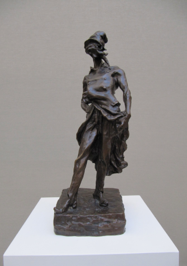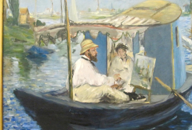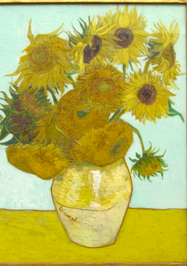Neue pinakotHek
kunstarea
MUNICH, GERMANY
europe
march 5, 2011


Neue pinakotHek
kunstarea
MUNICH, GERMANY
europe
march 5, 2011


The Neue Pinakothek is considered to be one of the most important museums of art of the 19th century in the world. Founded by the former King Ludwig I of Bavaria in 1853, the museum focuses on paintings he collected beginning in 1809. The building was destroyed during World War II, and a new, postmodern building, designed by the architect Freiherr von Branca, was opened in 1981. The museum’s collection is drawn from more than 3,000 European paintings in the Bavarian State Painting Collections. The exhibitions within the elegant galleries include 400 paintings and 50 sculptures that span the art history periods from classicism to art nouveau. The Neue Pinakothek bridges art periods represented by two other museums in the Kunstarea or Art Area: The Alt Pinakothek offering a survey of paintings from the Middle Ages through the Rococo era, and the Modern Pinakothek taking the history of art from the 20th century into contemporary times. Included in the Neue Pinakothek is the “Tschudi Contribution”, a collection of 44 paintings, nine sculptures and 22 drawings from new French artists, personally collected by Hugo von Tschudi while he was general director of the State Collection. Since public funds could not be used to purchase these works, his associates came up with the money from private contributions after his death in 1911. The collection housed at the Neue Pinakothek is impressive. German artists are represented in periods referred to as the Classism in Rome, German Romanticism, the Biedermeier and the Deutschrömer periods. Later periods of German artists include History paintings, German Realism, and German Impressionism. International artists such as Goya are also represented in the galleries. French Realism and French Romanticism with artists such as Eugène Delacroix and Jean-François Millet are exhibited here A collection of paintings by famous English Artists such as Sir Joshua Reynolds, Gainsborough, Romney, Reynolds, and JMW Turner, considered to be the most important collection of English paintings outside the UK, have fine examples of their works of art on display. The well-regarded French Impressionists with paintings by Cézanne, Degas, Sisley, Seurat, and Vincent Van Gogh at the end of the 19th century, as well as Symbolism and Art Nouveau pieces representing European painters of these periods such as James Ensor and Edvard Munch. Sculptures by Canova, Rodin, Maillol, and Picasso round out a marvelous collection of important works of art.
PHOTOS: Left Column: 1. Heinrich Maria von Hess (1798-1863) Apollo and the Muses, 1826. 2. Exhibition gallery. The painting by Jacques-Louis David (1748-1825) is entitled Anne-Marie-Louis Thélusson Comtesse de Sorcy, 1790. The sculpture is entitled Paris, 1816 by Antonio Canova (1757-1822). 3. Joseph Stieler (1781-1858) The Court Singer Katharina Sigl-Vespermann, 1828. 4. Honoré Daumier (1808-1879) Ratapoil c. 1850. Center, Top: Thomas Gainsborough (1727-1788) Mrs. Thomas Hibbert. 1786. Center, Middle: Vincent Van Gogh (1853-1890) Sunflowers. 1888. Center, Bottom: Exhibition Gallery. Sculpture: Adonis 1808/32 by Bertel Thorvaldsen (1770-1844).Right Column: 1. Paul Cézanne (1839-1906) Self-Portrait. c. 1880. 2. Gustav Klimt (1862-1918) Margaret Stonborough-Wittgenstein. 1905. 3. Edouard Manet (1832-1883) Monet Painting on his Studio Boat. 1874.


Old Fine Arts Museum








